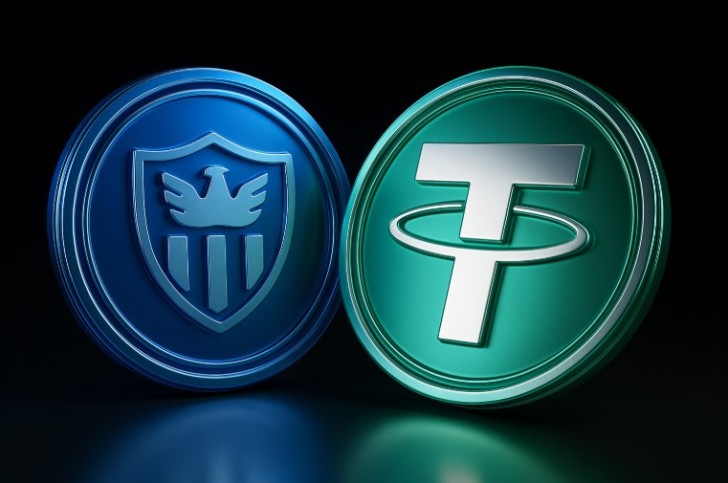Critics argue that this is not where a multi-billion-dollar-backed token should have been born. Stablecoins are not meant to be speculative assets or anonymous transfer vehicles. They are designed to provide speed, low cost, and reliable settlement — attributes that require transparency and confidence in reserves. Locating the world’s largest stablecoin in a secrecy jurisdiction undercuts the very trust stablecoins are supposed to provide.
A New Regulatory Environment
The Guiding and Establishing National Innovation for U.S. Stablecoins Act (GENIUS Act) passed in 2025, changed the rules. Stablecoins offered in the U.S. must now be issued under U.S. law, backed by cash or Treasuries, and subject to oversight. For Tether, this was a direct challenge. USDT, born offshore and tied to opaque structures, could not be easily integrated into that framework.
The solution was to launch a new token: USAT. By creating a U.S.-branded affiliate, Tether could satisfy the requirements of the GENIUS Act without uprooting its offshore empire. The compliance would be outsourced. The ownership would not change.
Anchorage Digital Steps In
To make USAT a reality, Tether turned to Anchorage Digital Bank, N.A., which would serve as the official issuer. On paper, this gave USAT the U.S. regulatory anchor it needed. In practice, it tied Tether to a partner with its own history of regulatory troubles.
Anchorage is not based in Alaska, despite the name. Its headquarters are in San Francisco, with a significant engineering hub in Portugal and an operating entity in Singapore. The company has also announced institutional partnerships in Thailand. While Anchorage holds an OCC national trust charter — a rare credential in crypto — its footprint is global, not domestic.
Its investor list includes some of the world’s most prominent financial players — Goldman Sachs, KKR, and BlackRock-managed funds — as well as GIC, Singapore’s sovereign wealth fund. For a bank tasked with giving Tether’s token an American image, foreign government investment and offshore operations complicate the narrative.
Regulatory Baggage
Anchorage’s regulatory record raises further questions.
- In April 2022, the Office of the Comptroller of the Currency (OCC) issued a consent order, citing serious deficiencies in the bank’s anti-money laundering program. The order required remediation across compliance, monitoring, and customer due diligence. Anchorage remained under sanction for more than three years.
- In August 2025, the OCC terminated the consent order, stating the deficiencies had been corrected. That lifted the immediate sanction, but the fact remains: Anchorage spent years in the regulatory penalty box.
- In April 2025, Barron’s reported that the Department of Homeland Security’s El Dorado Task Force had contacted former Anchorage employees as part of an inquiry into the bank’s practices. Anchorage disputed the report, and no charges have followed. Even so, the coverage highlighted ongoing scrutiny.
For a company that wants to project stability and trust, these episodes matter.
A Deal of Convenience
The partnership between Tether and Anchorage appears more like a convenience arrangement than a meeting of strong institutions. Tether needed a U.S. issuer to satisfy new legal standards. Anchorage, having just exited years of regulatory sanction, needed a marquee deal to reassert itself. The match was opportunistic.
The analogy is hard to miss: Anchorage is like a car that has been in an accident, patched together with Bondo, given a new coat of paint, and rolled onto the lot. The buyer knows the history, but the price is right. Tether, facing pressure to present a U.S.-compliant token, saw Anchorage as a viable option, credentialed and eager.
The Image Problem
This arrangement leaves investors and policymakers with questions. Stablecoins are meant to embody stability, transparency, and reliability. Yet USAT is being marketed as an “American” product even though it is:
- Born offshore. The parent remains tied to BVI structures, which are designed for secrecy.
- Issued through a compromised partner. Anchorage recently exited a consent order due to compliance failures and was named in media reports regarding federal scrutiny.
- Built on international operations. Significant staff and infrastructure are based in Portugal and Singapore, and foreign sovereign wealth is represented on the cap table.
Pairing Tether’s offshore empire with Anchorage’s patchy record does not project confidence. It looks like shopping for a deal — finding a U.S. partner just credible enough to meet the letter of the law while leaving the underlying concerns unresolved.
Contrast With a Domestic Model
By comparison, other stablecoins developed within U.S. borders emphasize transparency and domestic ownership. For example, World Liberty Financial’s USD1 was launched in the United States, is owned by U.S. investors, and was designed from inception to comply with domestic law. Its purpose is clear: state-level adoption, payments to vendors and contractors, and direct accountability under U.S. jurisdiction.
That is the model stablecoins were meant to follow: low cost, fast settlement, and public trust rooted in transparency.
The Unanswered Question
Tether’s move into the U.S. market through USAT may satisfy legal requirements, but it does little to settle the core issue. Can a company born in secrecy jurisdictions, tied to opaque structures, and now relying on a bank just emerging from regulatory sanction truly deliver the trust and reliability stablecoins require?
That question remains unanswered — and it is the one that matters most.
 Editorial staff
Editorial staff

 Editorial staff
Editorial staff
